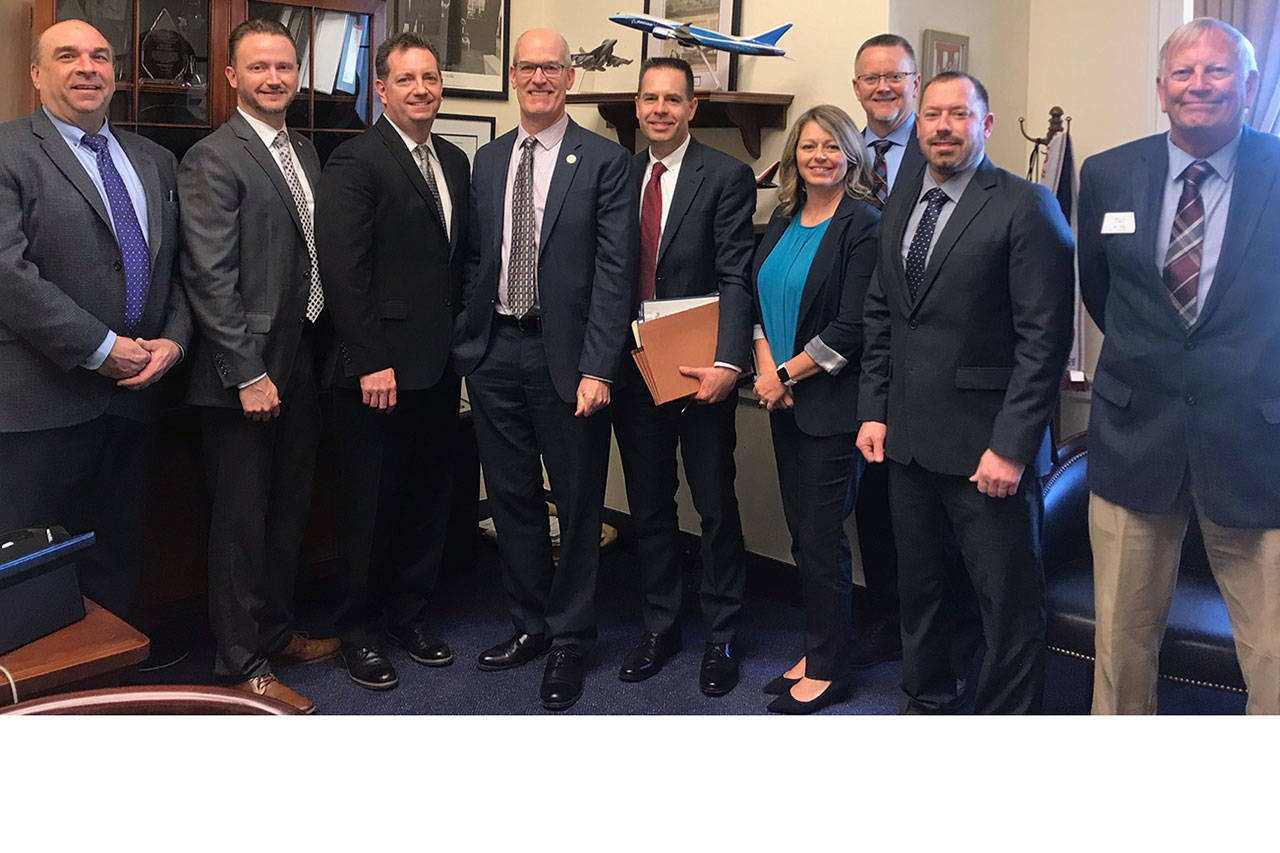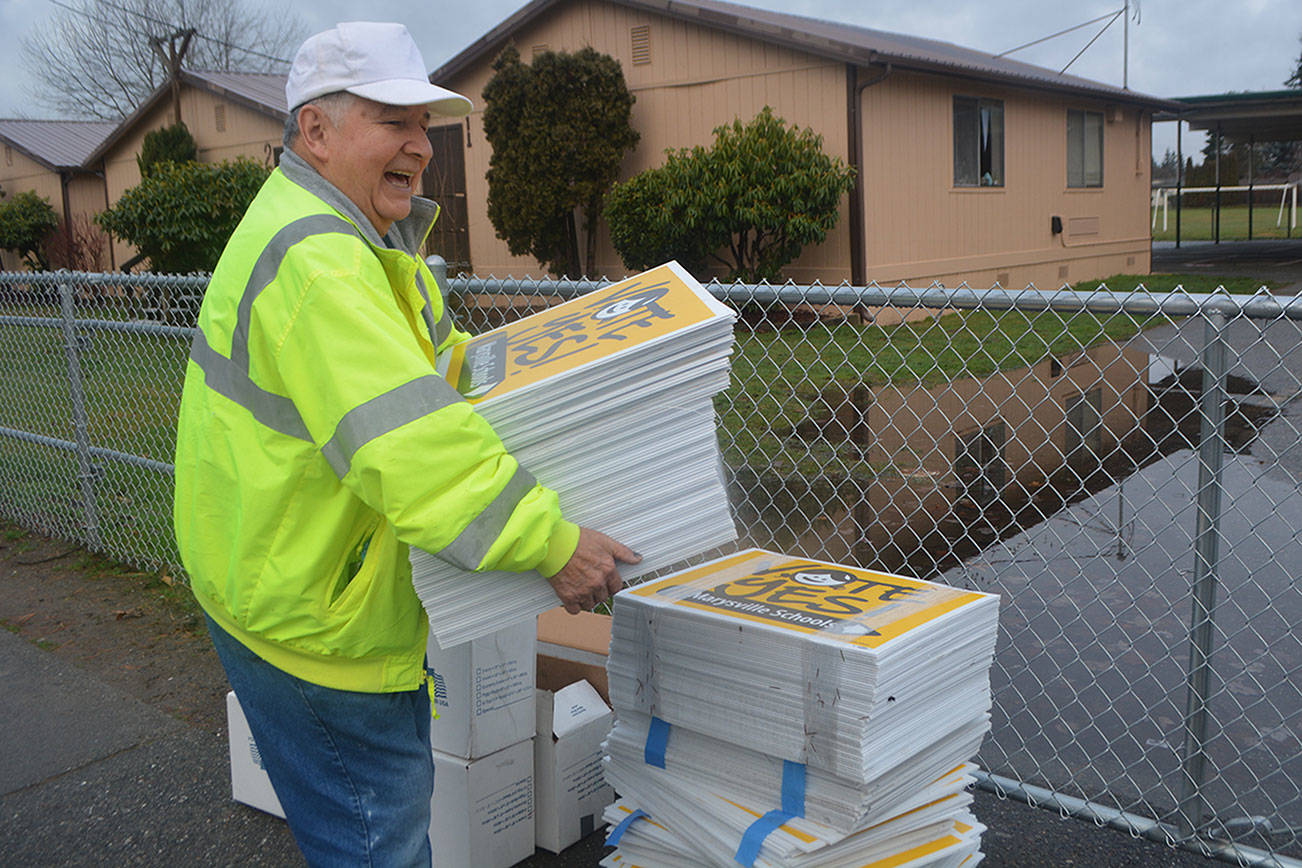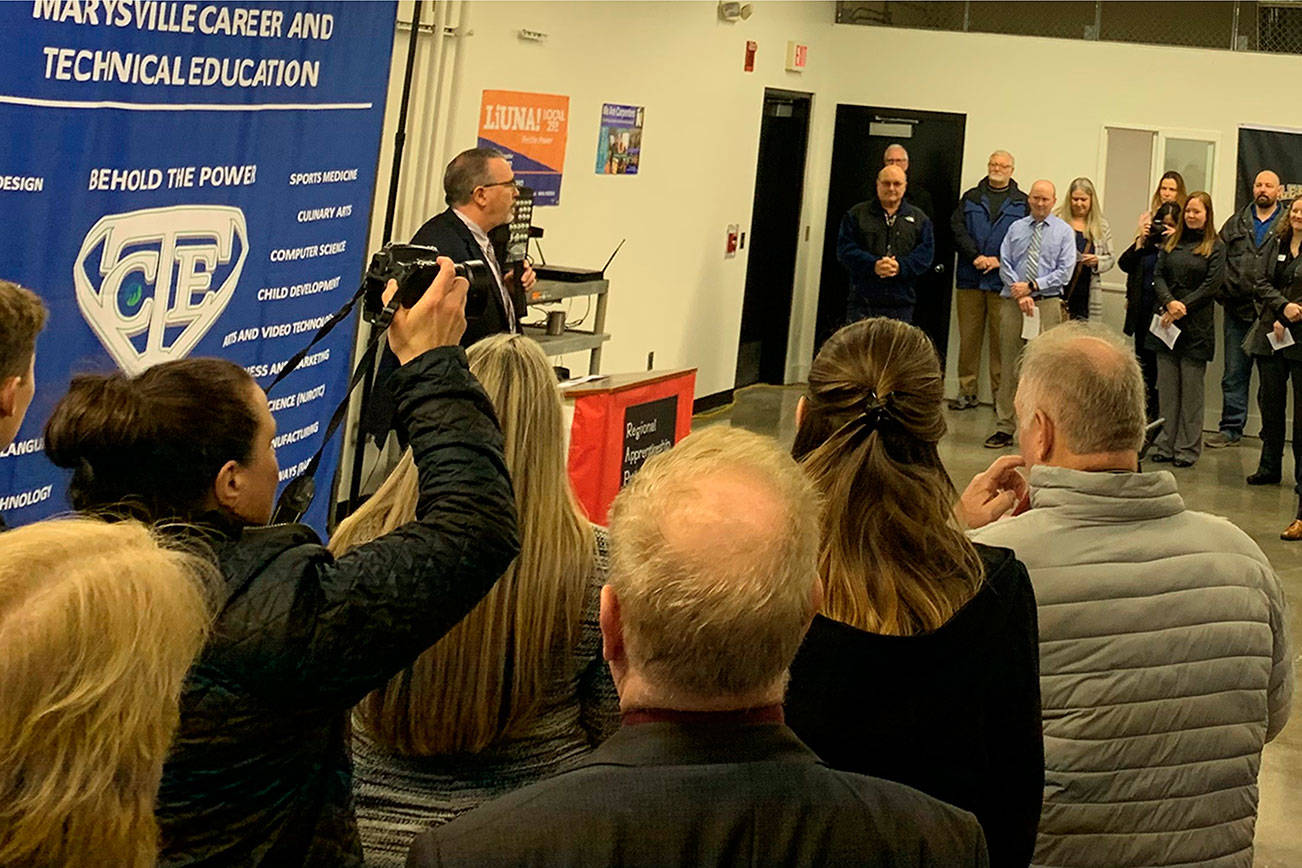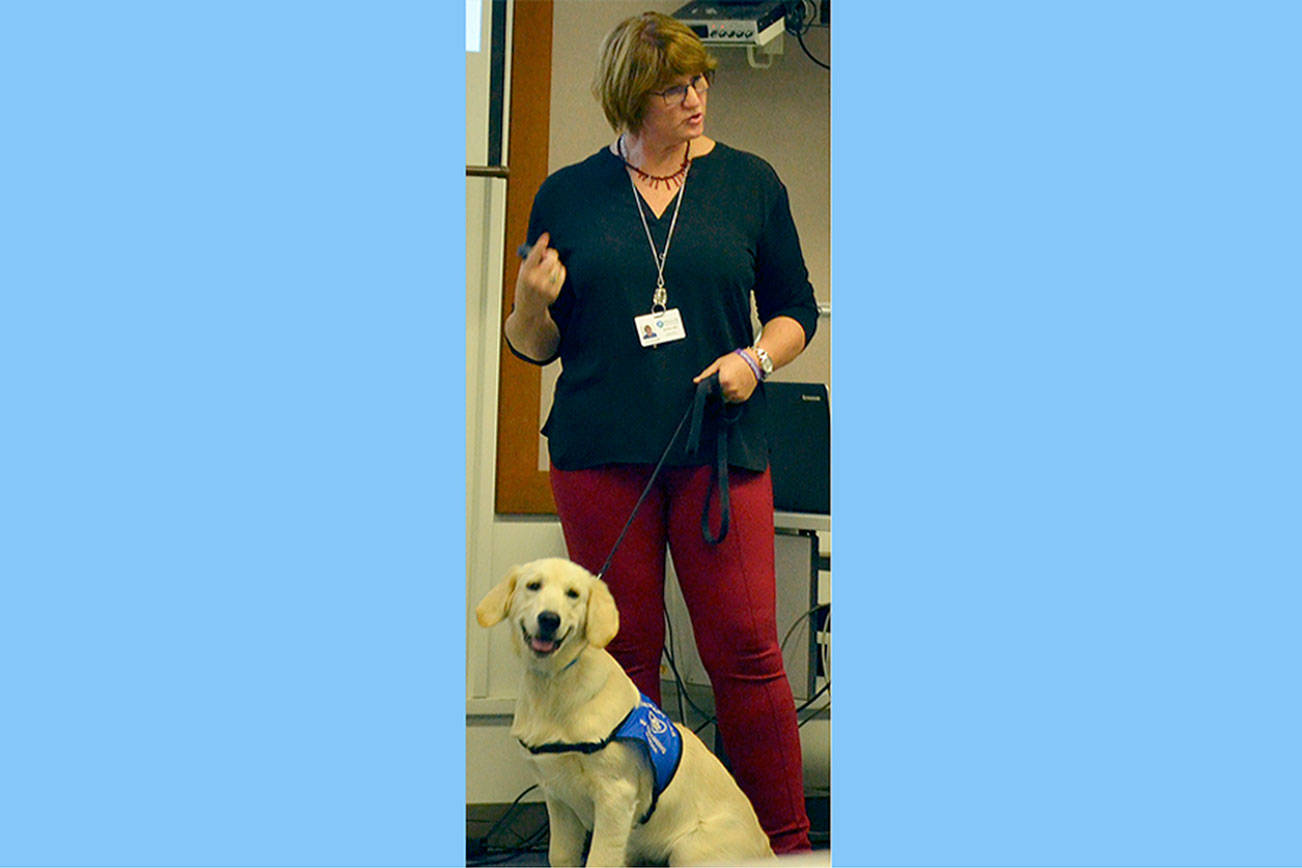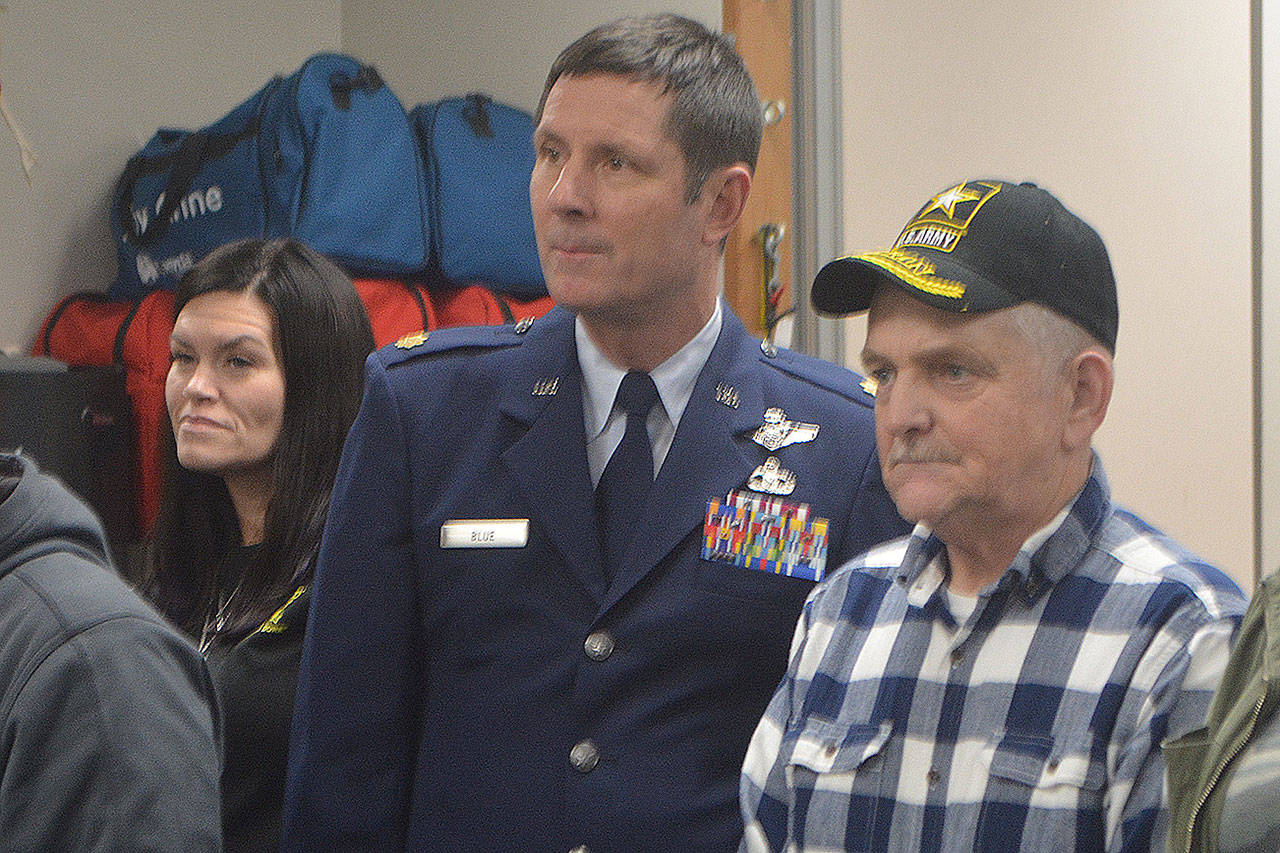MARYSVILLE – It’s all about the numbers. And, “getting to know you, getting to know all about you.” It’s not the King and I, it’s the 3 Lawmakers and I – in this case I meaning Marysville.
In a nutshell, that’s what city officials said about their recent trip to Washington, D.C., which cost taxpayers $22,715.38.
Mayor Jon Nehring and Councilmen Jeff Vaughan and Mark James said it makes a huge difference when all seven council members and the mayor can attend. It makes an impact on not only lawmakers Democrats Patty Murray, Maria Cantwell and Rick Larsen of Washington state, but also their staffers.
“They know who we are,” Vaughan said, which makes them responsive. “They are well-versed on issues important to the city.”
The city has been sending leaders to D.C. for decades. Nehring said at first it was sporadic; they might miss a year, and maybe only a few folks would go.
But the past few years, most of the council has gone.
“It makes an impression,” Nehring said, adding the lawmakers have noticed that other communities have not invested the time and money that Marysville has. Vaughan said staffers give them tips on how to be successful when trying for money for projects. That would not have happened without relationships developing, he said.
Nehring said this is year two or three that they have been pushing for federal funding for a Grove Street Overcrossing. So Cantwell’s office gave them pointers on how to get into that grant cycle. “We get that kind of buy in,”he said.
Vaughan said staffers advised the city to set up an aggregate project where there would be less competition for money. He said help from staffers can be just as important as from lawmakers because they live and work in D.C., and they know the system.
Nehring said meeting with Congressional leaders isn’t the main reason for the trip. They attend the four-day National League of Cities Conference. He said council members split up and try to attend all of the different sessions. Classes this year were on issues such as opioids, bonds and broadband. On Capitol Hill Day they set up meetings individually with the three members of Congress, along with a meeting with a group of lawmakers and with someone from the Administration, this year it was the Department of Transportation.
——————
With a bill that includes $4,125 in conference registration, $4,126.24 in airfare, $12,280.67 for hotel rooms and $2,183.47 for other expenses such as meals, parking, transit, etc., one has to wonder what other options there are.
Can’t the council just use email, text or call their lawmakers? Can’t they talk with them when they travel West? “We do all those things,” Vaughan said.
But getting to know the staffers in D.C. is crucial to getting federal money, Nehring added. “The staff is D.C. is way more tuned in,” he said.
The proof is in the numbers. Marysville has received $7.5 million in federal funds for things like transportation, police and waterfront cleanup in the last decade. “Before we got a fraction of that,” Nehring said. “We’re a bigger fish in the pond.”
The mayor said it takes time to get federal funds.
“We play the long game,” he said. “It almost never happens in one year.”
For example, this is the first year the city has talked to Congress about a 156th Street NE overcrossing. “We wanted to get it on their radar now,” he said.
While there is an interchange already planned there, Nehring said without an overcrossing it will only cause more gridlock at 172nd. But if a route could go west across the railroad tracks, that could reduce traffic problems.
One time the city did get money quickly – after the Marysville-Pilchuck High School shooting. The city received a grant to fund student resource officers at the schools. “We were able to tell an emotional story and within months” received funds, the mayor said.
——————
Nehring said the city tries to keep costs down on the D.C. trips. They make flight reservations months in advance to get the best price. Still, “Flight prices were higher than in other years,” he said, even though they went at “awkward times that weren’t as convenient.”
They flew into Dulles rather than Reagan airport to save about $300 per ticket even though it was about an hour farther away from their destination.
They used Uber instead of taking taxis to get around.
As for meals, “In D.C. it’s difficult to eat out and not spend more money than you would in Marysville,” Nehring said.
Still, they ate at Mexican and barbecue places that were near their hotel.
“It was a lot cheaper than the hotel restaurants,” the mayor said, adding they often just grabbed a muffin for breakfast.
One advantage of going to D.C. these many years is they know which restaurants to avoid.
“We made a mistake a few years ago going to one that looked reasonable,” he said. Once inside, they decided, “Let’s not order this.”
They took that restaurant off their list of places to go.
Even when they had free time, and they would have used their own money, they went to places that were free, including the Ford Theater where President Lincoln was shot and all the monuments on the National Mall.
————————
This year, city staff put together a flashy color portfolio of projects that need federal help. Along with the Grove Street and 156th Street Overcrossings, other projects include: Ebey Waterfront Park expansion, the Arlington Marysville Manufacturing Industrial Center, and Public Safety Homelessness/Mental Health/Drug Treatment. Only in his second year, James said he didn’t mind that he didn’t present in D.C. “As a new person I didn’t want to mess up,” he said.
However, when they went to Olympia after that, he got to present materials to eight lawmakers who represent this area. “And we get more money from the state than the federal government,” he said.
James’s comments bring up a good point in that the council’s trip to Olympia is much-less expensive. And those relationships have led to more money coming to this area. But Nehring pointed out most of that money is for huge projects related to Interstate 5.
Back to D.C., the three local leaders said the three in the nation’s capital are all supportive of Marysville.
“That’s the beauty of it. All of them are pretty tight,” Nehring said.
James said people shouldn’t believe everything they hear and read about D.C. lawmakers.
“They do their jobs. They work hard for the city,” he said. “It’s politics played the right way.”
Nehring said going to D.C. is the city’s way of bringing back all the tax money it can for city residents who pay it. “We gotta go fight for it,” he said. “All that money goes into the netherlands. We want to bring back every dollar we can.”
Priority projects
•Grove Street Overcrossing: $24 million. Would provide an east-west route over the train tracks, relieving congestion and improving connectivity.
•Ebey Waterfront Park Expansion: $18.3 million. Provides an aesthetic gateway to the city. Promotes economic development downtown and to the waterfront.
•156th Street NE Railroad Overcrossing: $12.35 million. The route was closed in the early 2000s without recognition of future growth. A route over the tracks would make the upcoming interchange there be more effective by dispersing traffic. That becomes even more important with development of the Arlington Marysville Manufacturing Industrial Center.
•AMMIC: The goal is to provide 25,000 jobs by 2040, allowing people to work where they live rather than commuting and causing gridlock.
*Homelessness: Marysville and Arlington have embedded social worker programs to get homeless people the help they need. The Marysville Extended Shelter Homes program houses people in recovery for a period of time.
2018 Fed Funds
•$473,794, Sunnyside overlay
•$416,405, Housing and Urban development
•$329,096, Citywide intersection improvements
•$61,680, State Avenue 1st to 88th
•$49,244, Community policing
•$12,427, Justice assistance
The last 10 years
2010 – $18,740. 2011 – $108,473. 2012 – $443,581. 2013 – $700,607. 2014 – $620,314. 2015 – $895,100. 2016 – $654,337. 2017 – $745,382. 2018 – $1,342,646.
